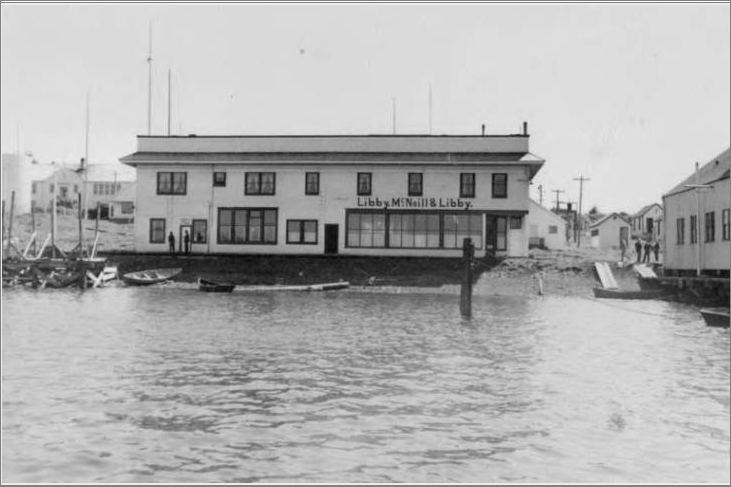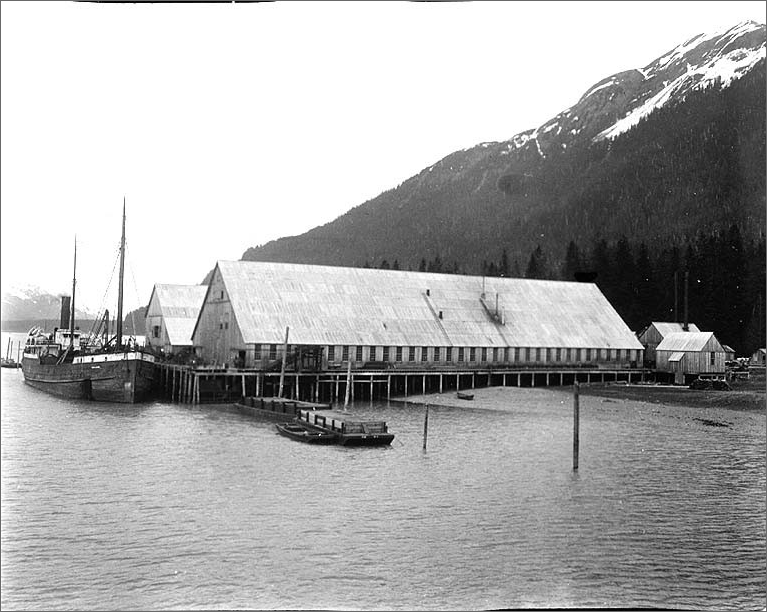The Libby 8 was a so-called “cannery boat” — owned by the cannery and leased to a skipper for the fishing season. The history of these boats goes back to the late 19th century. They appear in various guises but are forever and always attached to fish processors and canneries. In the 49th state, we’re primarily talking about the history of salmon fishing in the Southeast Alaska panhandle.

Historical Perspective
“In 1907, the first floating fish trap was devised in Ketchikan; such traps were deployed where fixed pilings were impractical. A cannery boat would periodically pull alongside the traps and load the fish into its hold to take them to the cannery. The traps were costly but efficient. After stream barricades and fixed-net fishing in rivers were outlawed in 1889, the salmon traps played a dominant role in harvest operations.” [Southeast Alaska Conservation Assessment,The Southeastern Alaska Salmon Industry: Historical Overview and Current Status, John Sisk, 2017]

Evolving Practices
“As fishery regulation evolved, so did the cannery boats. Soon the packers provided boats… because each packer wanted a fleet that was obligated to sell to them. Fishermen wanted to purchase their own boats and gear in order to be able to choose to whom they sold their fish. By the end of the 19th century the practice of packers providing boats and gear started to die out.” [Commercial Fishing, Northwest Power & Convervation Council]
But not entirely.
The story of Excursion Inlet Packing company, near Juneau, Alaska, is instructive. Because the entry cost of commercial salmon fishing — the boat, the gear, the permits — is expensive, the match of fishermen to equipment is not always perfect. The canneries, with their sometimes superior access to capital, can bridge the gap.

In 1959, the year of Alaska’s statehood, Excursion Inlet Packing Company (XIP) had only five seiners that regularly supplied fish, and none were particularly productive. Fortunately, XIP was able to “buy” a seine fleet from the Pelican Packing Company.
In 1961, XIP bought out Pelican Packing Company, including the mortgages on the Hoonah seine fleet. A.W. Brindle, of Ketchikan-based Wards Cove Packing Company, financed the purchase and became one-third owner of XIP. The Pelican cannery’s equipment was moved to Excursion Inlet. They saw the need to upgrade the Hoonah seine fleet and soon contracted for the construction in a Seattle shipyard of three new seiners, the Gypsy Queen, Ocean Queen, and Vagabond Queen.
Alaska Historical Society, Canning Salmon at Excursion Inlet, Alaska: The First Century, Jim Mackovjak, Gustavus, Alaska, 2013
Working a cannery boat is, however, diametrically opposed to the entrepreneurial spirit associated with the freewheeling commercial salmon industry. On a cannery boat, you are an employee. Even if you’re the skipper. The cannery determines your share; the overhead goes directly to the cannery and you get what’s left over. The cannery deducts a lot.
Still one supposes it’s better than being stuck on shore.

Order “What Happened In Craig,” HERE and HERE. True crime from Epicenter Press about Alaska’s Worst Unsolved Mass Murder.
loved those Libby boats, floating wrecks most of them!